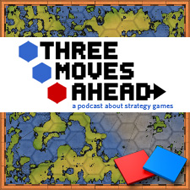What this is about, including full list of posts.
When I started the national character series last fall, I didn’t expect it to take this long to finish (things refused to cooperate for quite some time) and I certainly didn’t expect it to become one of my most popular series. The popularity is largely connected to a growing audience for the blog because of the podcast and residual faith that I generally know what I’m writing about, though I’m happy to be corrected.
But I honestly think its popularity is more than that. In his first Gamespy strategy column, Tom Chick saluted these essays as an example of the sort of games writing and reflection that only strategy gaming can really provide, which is nice but a bit further than I am willing to go. I think that reader response – pro and con – can really be traced to that central gamer conceit that drives a lot of discussion.
Everyone thinks that they know how this should work. We know history. We know games. We’ve played these things forever. Then someone sits down and writes it all out and tugs at a thread and either suspicions are confirmed or challenged, but the central idea itself (we know who Rome and Persia and China are as “people”) remains in tact.
Remember, Civilization, the first great game with national factions, did almost nothing to differentiate them. France was Napoleon, England was Elizabeth, the Zulu were Shaka and that was that. At least when Ancient Art of War said you were fighting Napoleon, it tried to have an AI that fought differently from Sun Tzu. But this built up a relationship with these nations and humans are great at imposing meaning where there is none, so as far as I’m concerned, Montezuma has always been a prick.
Historical strategy games owe a debt to science fiction games, because there is an assumption that two races that evolved on different planets will have different talents or cultures. Master of Orion, Starcraft, and maybe some fantasy games, too, showed how differentiating factions made gameplay more interesting and varied. Playing the Civ 1 French wasn’t that much different from the Civ 1 Egyptians. Klackons and Psilons, though…
“National characters” are crudely stereotypical and reductionist, but we really can’t imagine strategy games without them at this point. Even with a simple and bare understanding of 16th century history, we think we know who the Aztecs are because we’ve met them with their colorful feathered soldiers, grand pyramids and heart ripping agendas. No matter what the game, Germany means strong economic power and England means longbows or better boats. It’s not simply that strategy games reflect prevailing biases or thumbnail sketches of history – strategy games draft these sketches for us, and can then infect other games.
Here’s a small example. The Iroquois are a comparatively minor Civ, appearing in Civ 3, Civ 5, Rise of Nations and Age of Empires 3. Of these games, Rise of Nations and Civ 5 are the most likely to attribute an overarching national characteristic. RoN lets the Iroquois move through forests – the only nation that can. In Civ 5? The nation can treat forest tiles like roads. Even with a virtual blank cheque to create a national character, Firaxis replicated a not-very-obvious power Big Huge Games had designed a decade earlier. Strategy games can create national myths and characters just by repeating them. Any future Iroquois nation will somehow be tied to forest power.
And if other games are infected, it can’t help but affect how we think.
Some takeaways from this series:
1) Nations are mechanics: Designing distinctive nations for an historical strategy game is imposing math and order on the past. A Golden Age or stereotypical trait is often selected and amplified so that there can be a rich faction or a productive faction or a scientific faction or a conquering faction. Though this sort of design is laid bare in the balanced variance of something like Sid Meier’s Alpha Centauri‘s imagined ideological nations, it is present in many of the designs you will see across the later Civs, Rise of Nations, Empire Earth, etc. National characteristics and stereotypes will regularly predict who gets assigned to which mechanic, but when we speak of balancing nations, what we are really talking about is which mechanic can get juiced without throwing the rest of the design out of whack..
2) Nations are archetypes: A lot of the time, national characters are assigned to pay homage to a “type” of society. The Aztecs become all about human sacrifice, the Zulu are the savage natives overrunning European outposts, the Mongols are implacable barbarians. In games that are about civilization and moving through the ages, I suppose that it is natural to create enemies that are just on the fringe of civilization, even as they advance into space or crush us with nuclear weapons.
3) History is a weapon: I love history, and think it’s important but I don’t generally get upset about historical inaccuracies in games or movies. When I do, it’s because I firmly believe that in some cases these inaccuracies or deliberate simplifications can cause real damage. If games have the power to change or direct how we see history (and it is clear that they do), then game designers have an obligation to be clear on why they are designing nations or armies the way they are. If you consistently reduce Arabs and Indians to their religion, for example, then you do a disservice to their science and dishonour the central role of Christianity in Western development. Speak honestly about historical faction design.
4) History is fun: I was asked on Formspring how much historical research I did for each of these and the answer is not a lot. I research the games more because who can possibly remember all the math involved in the Roman sword unit calculations? Most of the historical stuff is fact checking, getting dates right and looking for a consensus on how to spell some names. Little I write is beyond an AP World History class; I end up reading more afterwards because I end up learning new things. Commenters have engaged with the history and how it is revealed in the games. Even if you all don’t see this issue as important, many of you find it interesting and we can all pitch in with what we know – in this way, Tom is absolutely right. Historical strategy games can engage us in ways no other genre can because so many of us have the raw data at our fingertips. Games that let us indulge our passion for history and ask if the history we love is being treated fairly are special things.
5) Question Design, not Details: I should have done Persia. And Turkey. And Portugal. And the Netherlands. I could do these forever, in fact. Carthage has appeared in multiple games. So have the Hittites. And the Gauls. But I think I am finished because the point is made. Too often, historical criticism of games is based on accuracy and realism, something that is difficult to talk about meaningfully in an art that relies on abstraction. (You can ask why some things are abstracted and some are not, of course.) But what historical game analysis really needs sometimes is kicking at the premises. This series is pretty much 25000 words kicking at the idea that we give nations personalities and they are often consistent from game to game, developer to developer, and this says something about how we turn history into a pastime.
And that’s it. Thanks for sticking with me through this long chore. I promise to do regular games blogging for a while now that this is done. Of course, we concluded with a podcast summary show, so listen to that, too.



